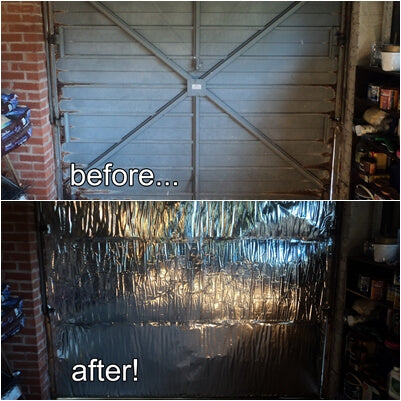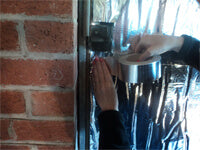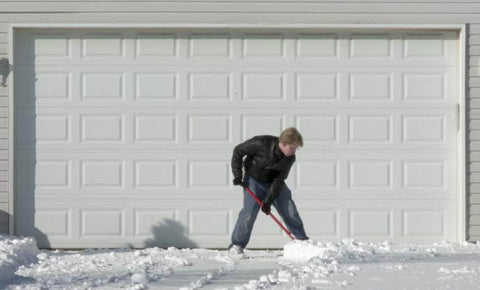Below are some tips you can follow to help you ensure that your garage doors, roof, window and walls are fully insulated. Notably, a garage door seal and a threshold seal not only will help keep heat in and cold out, but they also provide a barrier against rodents and other pests that are seeking a warmer place to spend the winter. But before we get to those tips about the how's of garage insulation, let’s outline the whys.
WHY DO YOU WANT TO INSULATE YOUR GARAGE?
First, nobody likes to give away money. With built-in shade cover and ventilation available by throwing up the door, cooling a garage enough for the average DIYer to do a bit of carpentry during the summer isn’t too tough. Heating a garage in the winter, however, can be an expensive proposition if your space isn’t as air-tight as it should be.
Nor do you want critters getting at those boxes of summer clothes, Christmas decorations or bags of grass seed you may be storing.
If you use the garage for do-it-yourself projects, insulation also serves to muffle noise — so you won’t disturb whoever’s in the house while you’re banging away in the garage.
Furthermore, a garage is, by definition, the house for your car. It is occasionally the base of operations for any number of home improvement projects that can, like your car, produce toxic, flammable or otherwise unpleasant fumes. So in addition to keeping conditioned air in your garage, you want to keep the fumes produced in your garage out of your home.

FOUR STEPS TO PROPER GARAGE INSULATION
DOORS:
This is really a three-step process. There’s the threshold, then the gaps at the other edges of the door to take care of, and then there’s the door itself.
- There are three common ways to insulate a door — reflective foil roll insulation; rigid foam board panels; and flexible batt insulation. Steel doors can use any of the three; wood frame and panel doors would be best served with rigid products, and flat doors are candidates for rigid or reflective rolled foil. The insulation should be cut to fit and secured with an adhesive or clips (the latter would be supplied by the manufacturer).
- A garage door threshold seal makes up for a worn gasket strip of a floor that has settled and is no longer level. Threshold seals, when secured with adhesive, are watertight and easy to install — required tools are a tape measure, utility knife, pencil and straightedge. Look for those that are made from 100 per cent recyclable material that will not rot, decay or lose their colour.
- V-shaped weather stripping should be installed on the frame outside the door when the door is closed. Drafts, moisture and vermin will all be deterred.
ROOF:
If you have access to a garage attic, great — blown-in or rolled insulation, just like a house attic (and assuming a properly vented roof), should do the trick. However, if your garage doesn’t have an attic, and your only option is insulating the underside of the roof, it’s a bit trickier.
Maintaining airflow between the underside of the roof and the insulation is crucial. Attic baffles installed between the rafters, covered by insulation, is the way to go.
WINDOWS:
Often, garages are constructed with lower-quality windows than the rest of the house. There are a number of ways to cut off drafts at such windows, including:
- Replacing loose or missing glazing (working with glazing putty is a little like caulking, a little like mudding drywall)
- Weatherstripping the sides of the sashes (if you want the window to continue to function)
- Shrink film (applied with double-sided tape, tightened with a blow dryer, this seals against drafts and insulates with an air buffer — but the window is out of commission until the plastic comes off)

WALLS:
Walls shared by the home and garage need the most protection against fumes. Fortunately, sealing walls isn’t difficult or expensive. A fire-blocking foam sealant and silicone caulk will handle membrane penetrations (holes in walls for electric, heating, plumbing, etc.) and gaps where wood framing meets concrete.
Foam sealant should also be applied where framing touches drywall. After that, rolled fibreglass insulation — installed with the vapour retarder facing the house wall — completes the job.
SLAM THE DOOR ON WINTER
A quick inspection of your garage will let you know which tips you’ll have to follow. If you’re able to spot gaps between the floor and your garage door, a garage door threshold seal may be the answer. Inspect the walls, windows and roof, too. Look for areas where critters or cold air can enter, or where heat can escape. Identifying the problem areas is the first step to providing a fix!

